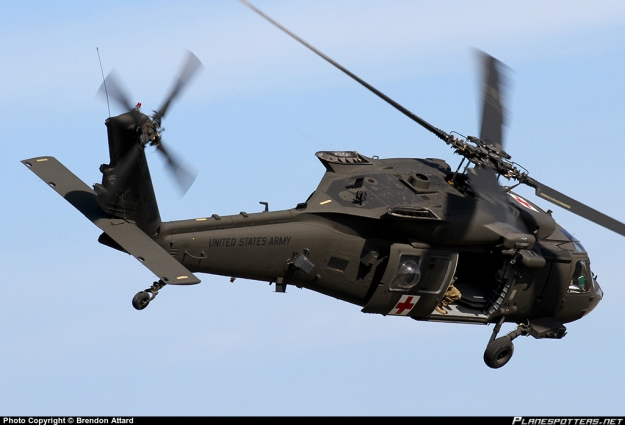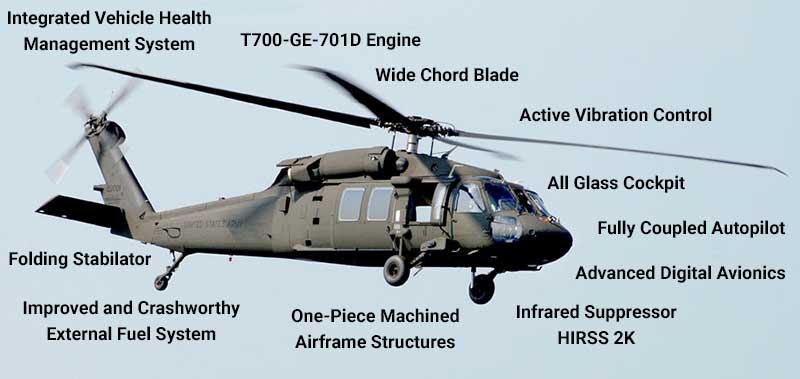Mastering the Skies: UH 60 Helicopter Upkeep Checklist
Wiki Article
Navigating Uh 60 Helicopter Rules and Compliance Needs

Regulatory Structure Overview
The regulatory framework regulating UH-60 helicopter procedures includes a complicated set of rules and standards developed by air travel authorities. These policies are designed to make certain the secure and effective operation of UH-60 helicopters in various atmospheres. The Federal Aeronautics Management (FAA) plays a main role in developing and enforcing these regulations, which cover a wide variety of functional facets, consisting of airworthiness criteria, pilot qualifications, upkeep needs, and operational treatments.Compliance with these guidelines is crucial for helicopter drivers to keep the highest degree of security and functional stability. Failing to abide by these regulations can cause major effects, including crashes, injuries, and regulative assents. Helicopter operators should stay notified about the newest regulative advancements and make sure that their procedures are in complete compliance with all suitable guidelines and criteria.
Airworthiness Instructions and Examinations
Amidst the regulative framework governing UH-60 helicopter procedures, an essential emphasis rests on compliance with Airworthiness Directives and conducting extensive inspections to maintain safety and security criteria and operational integrity. Airworthiness Directives (Advertisements) are provided by air travel authorities to deal with harmful conditions in aircraft, including the UH-60 helicopter, and required particular activities to be taken by owners or drivers. Conformity with ADs is necessary, and failure to adhere to these directives can lead to major consequences, including grounding of the aircraft.
Routine evaluations are paramount to making certain the airworthiness of UH-60 helicopters. By adhering to a stringent inspection program, drivers can spot and address potential concerns immediately, therefore enhancing the safety and dependability of UH-60 helicopter operations.
Pilot Certifications and Training

Pilot training for UH-60 helicopters is extensive and covers a vast array of subjects, including airplane systems, emergency situation treatments, navigation, and mission-specific training. Additionally, pilots go through simulator training to practice various emergency situation scenarios in a regulated atmosphere. This training aids pilots create the essential abilities to take care of challenging situations successfully.


Moreover, ongoing training and specialist growth are vital for UH-60 pilots to remain existing with the current laws, innovation, and best practices. By spending in pilot qualifications and training, drivers can improve safety, optimize performance, and make sure conformity with governing requirements in the operation of UH-60 helicopters.
Functional Limitations and Requirements
Pilot credentials and training serve as the foundation for recognizing redirected here the functional restrictions and needs associated with UH-60 helicopter procedures. Additionally, conformity demands, such as sticking to details flight paths, communication protocols, and emergency procedures, are important for maintaining functional safety and security and regulatory compliance. Pilots have to remain existing with all operational restrictions and requirements with regular training, instructions, and examines to mitigate risks and ensure risk-free and reliable UH-60 helicopter procedures.Emergency Treatments and Conformity Screening
Efficient emergency treatments and comprehensive conformity testing are essential parts of keeping operational safety and regulatory adherence in UH-60 helicopter operations. Emergency situation treatments incorporate protocols for different scenarios, including engine failures, fires, hydraulic issues, and much more. Pilots and crew members must be well-versed in these treatments to respond swiftly and successfully in emergency situations. Routine conformity screening guarantees that the helicopter meets all governing demands set forth by aeronautics authorities. This screening involves comprehensive inspections, checks, and examinations to confirm that the aircraft is airworthy and in conformity with all applicable policies.In addition, compliance testing may include simulations of emergency situation circumstances to evaluate the crew's response and the helicopter's efficiency under stress and anxiety. By focusing on emergency situation treatments and compliance screening, UH-60 drivers can reduce dangers and demonstrate their dedication to safety and governing conformity.
Final Thought
Finally, adherence to governing framework, conformity with airworthiness regulations, pilot qualifications and training, operational constraints, and emergency procedures are essential for navigating the laws and requirements of operating a UH-60 helicopter. uh 60. It is vital for drivers to prioritize security and make certain full compliance with all suitable laws to keep my link the airworthiness and functional stability of the airplaneNavigating the regulatory landscape surrounding UH-60 helicopter procedures requires a nuanced understanding of the detailed web of guidelines and conformity demands.Conformity with these policies is crucial for helicopter drivers to keep the greatest degrees of safety and security and operational stability.In the middle of the regulative framework regulating UH-60 helicopter procedures, an important focus exists on compliance with Airworthiness Directives and carrying out complete assessments to promote safety and security requirements and operational reliability.Efficient emergency situation treatments and extensive conformity screening are essential components of maintaining operational security and governing adherence in UH-60 helicopter operations. Normal conformity testing ensures that the helicopter satisfies all regulatory requirements established forth by aeronautics authorities.
Report this wiki page